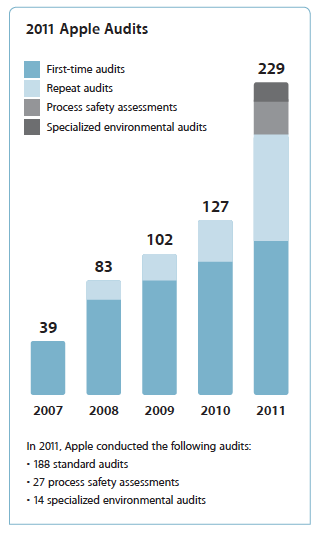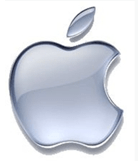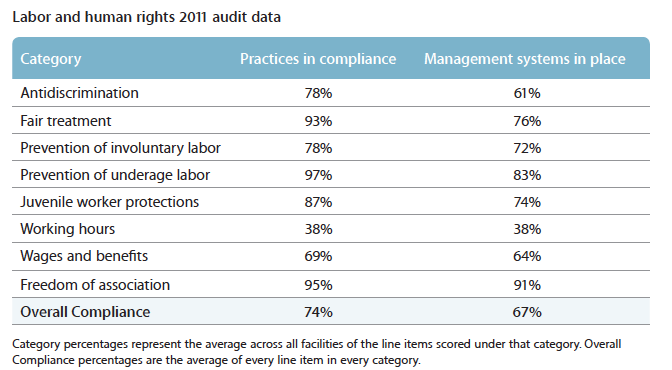Apple has, for the very first time, released a report of its suppliers. There are 156 suppliers listed in the PDF the company published (available here), including big names like Sony, Intel, Samsung and Foxconn (also known as Hon Hai Precision Industry Co.), which dragged Apple’s name into the light over questionable labor practices, when fourteen of the company’s workers plunged to their death at the Foxconn factories in 2010.
Since then, the company has been under increased scrutiny, with critics saying it should to be more transparent about the working conditions throughout its supply chain. Today, Apple appears to have answered its critics’ calls.
For more on Foxconn, read John Biggs’ four-part series, “The Future of Foxconn,” here.
 With the newly released series of reports from Apple, there’s not only a listing of suppliers, there are also details of Apple’s supplier audits over the course of the past year. In its 2012 Supplier Responsibility Report, Apple says it found fewer labor violations in 2011 than in 2010, based on 229 audits it conducted last year. That’s an 80% increase from 2010. From 2007 to 2010, in fact, the company had only conducted 288 total audits.
With the newly released series of reports from Apple, there’s not only a listing of suppliers, there are also details of Apple’s supplier audits over the course of the past year. In its 2012 Supplier Responsibility Report, Apple says it found fewer labor violations in 2011 than in 2010, based on 229 audits it conducted last year. That’s an 80% increase from 2010. From 2007 to 2010, in fact, the company had only conducted 288 total audits.
The report examines all areas of the supply chain, from components to assembly. There were, as you may expect, several labor violations. These included pay violations, issues with employee benefits, environmental hazards, and even some incidents of child labor.
A few standout numbers:
- Apple suppliers were in compliance with the max 60-hour work week 38% of the time
- 93 facilities had records showing that over 50% of their workers had exceeded a 60-hour week (in at least 1 week of the 12-week sample period)
- 108 of the 229 companies didn’t pay proper overtime as required by law
- AT 90 facilities, over half the records showed that employees had worked more than 6 consecutive days at least once per month
- 37 facilities lacked controls to ensure workers got at least 1 day off every 7 days
- 5 facilities used child labor in 6 cases
- There were 13 historical cases of underage labor
- 68 didn’t provide benefits (insurance, free physical exams) as required by law
- 49 didn’t provide employees with paid leave or vacation
- 56 facilites didn’t have procedures to prevent discrimination towards pregnant women; 24 conducted pregnancy tests
- 18 facilities screened for Hepatitis B; 52 didn’t have procedures to prevent discrimination based on those tests
- 3 facilities lied to auditors or gave them misleading answers and records regarding payroll and workers’ hours; 1 blocked Apple’s efforts to obtain payroll records
- 112 facilities were not properly storing, moving or handling hazardous chemicals
- 69 weren’t recycling or disposing of hazardous waste properly; 74 lacked management procedures on recycling and disposal
- The improper handling of combustible dust led to deaths and injuries at 2 facilites (one has corrected their procedures, the other is shut down); Foxconn lost 4 employees, and 18 were injured while Ri-Teng (a subsidiary of Pegatron) injured 59
Despite these numbers, disturbing as they may be, Apple says things are improving.
For comparison purposes, in 2010, there were 91 underage workers found working in 10 facilities, Apple disclosed. This year, the company says it found “no instances of intentional hiring of underage labor,” and that facilities simply didn’t have sufficient enough controls to verify age or detect fake documents.
Apple is also opening up access to an independent team of auditors from the Fair Labor Association (FLA), to review its ongoing performance in these matters. The results of those reports will appear on FLA’s website.
The company also expanded its Apple’s Supplier Employee Education and Development (SEED) program to all final assembly facilities. This program, which allows workers to take free finance, computer, English and other classes, has already been taken by over 60,000 workers.

